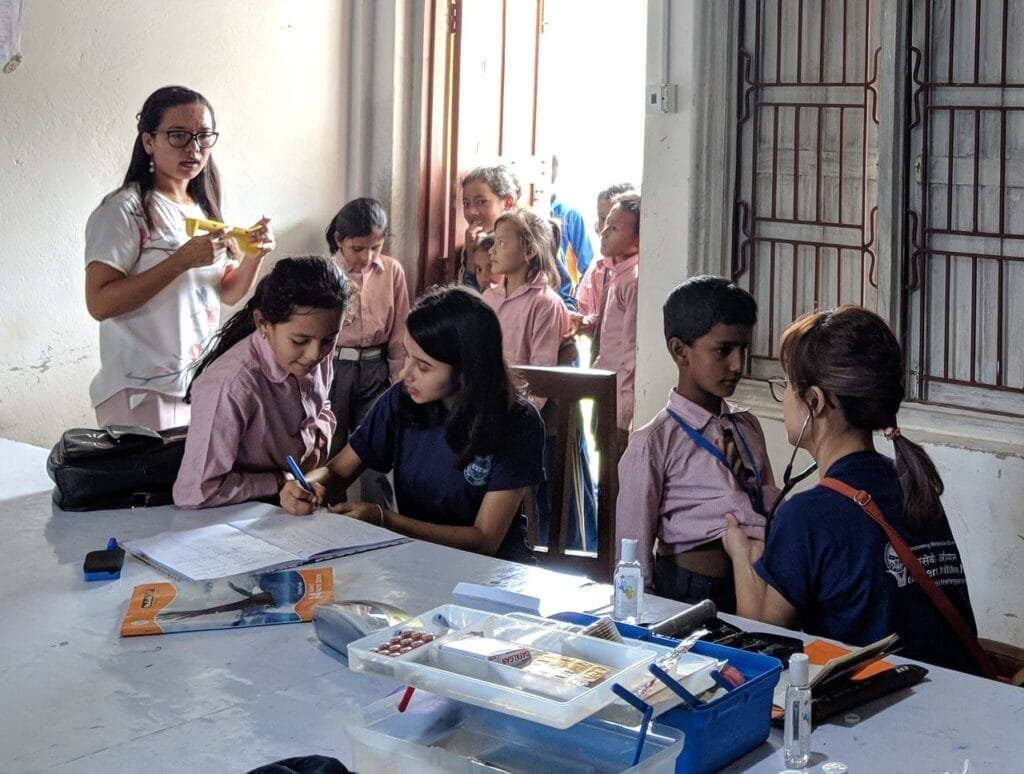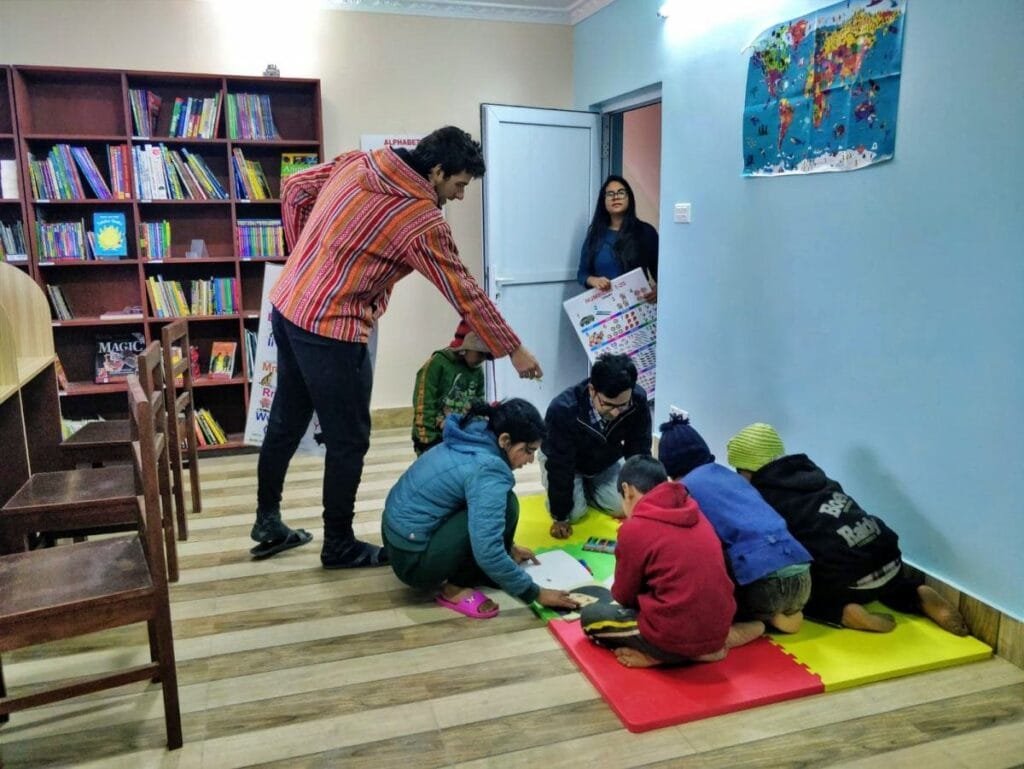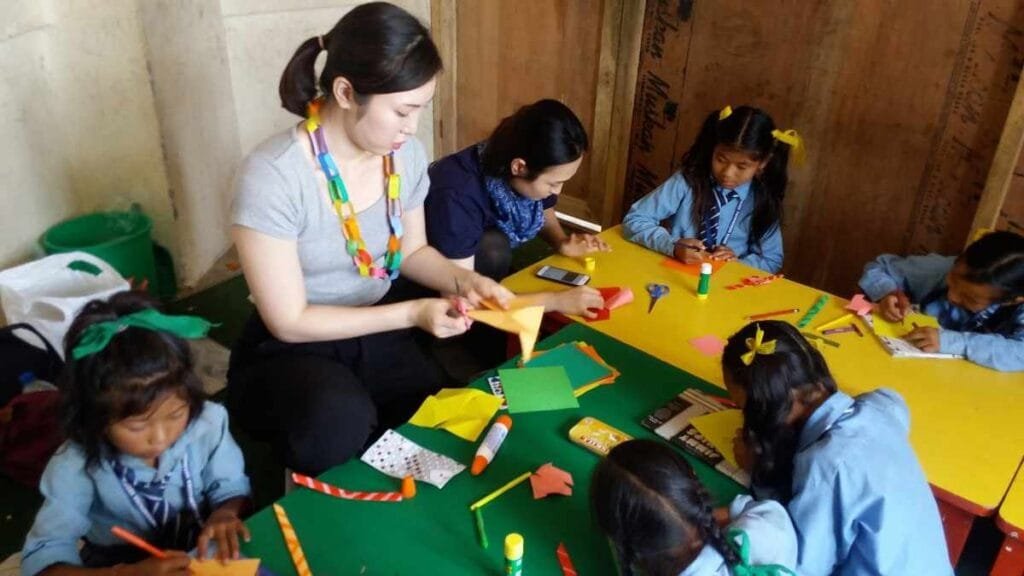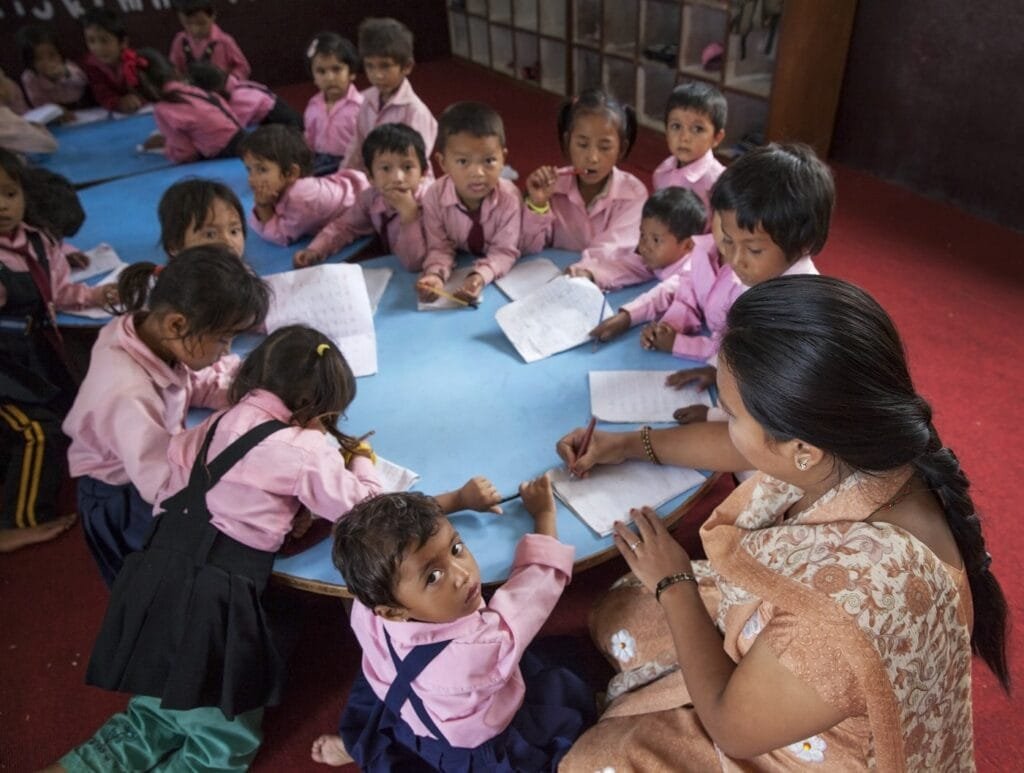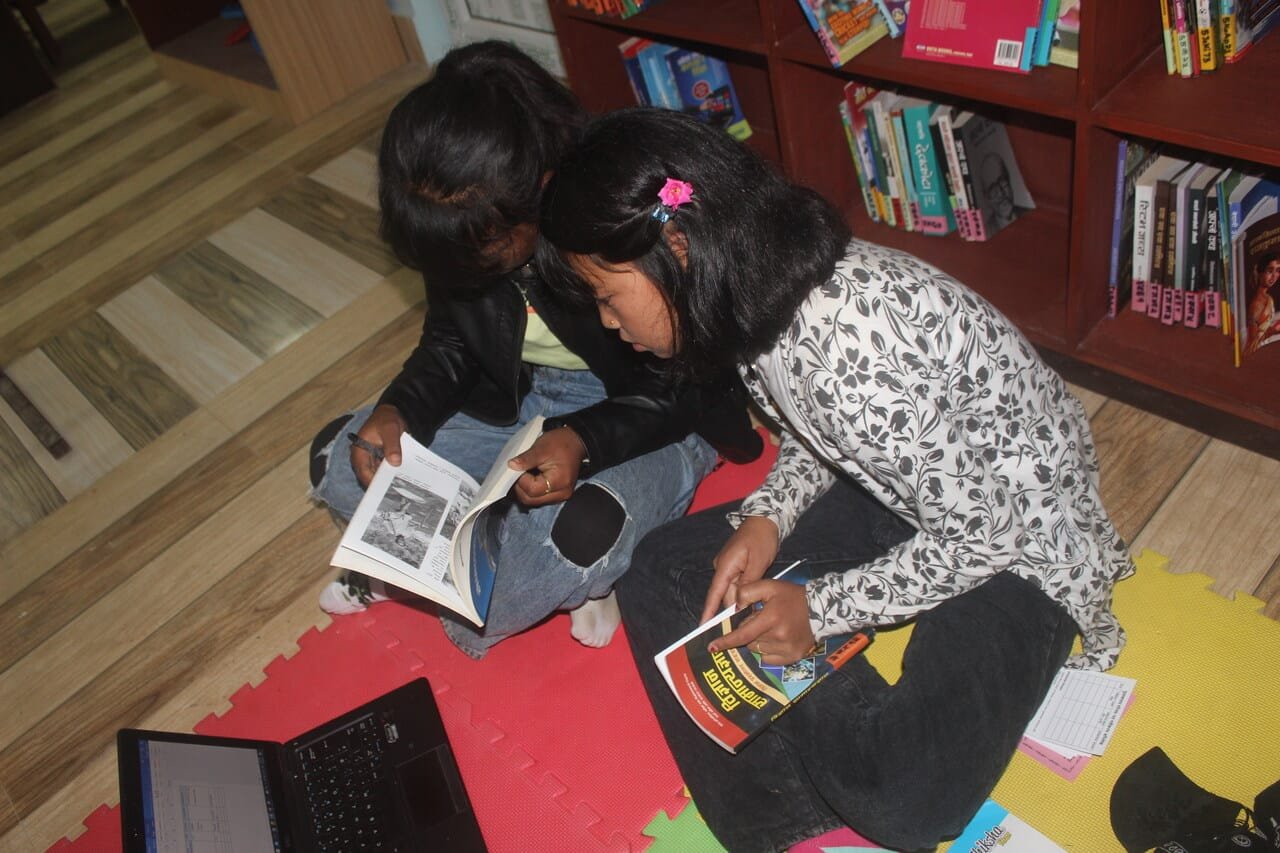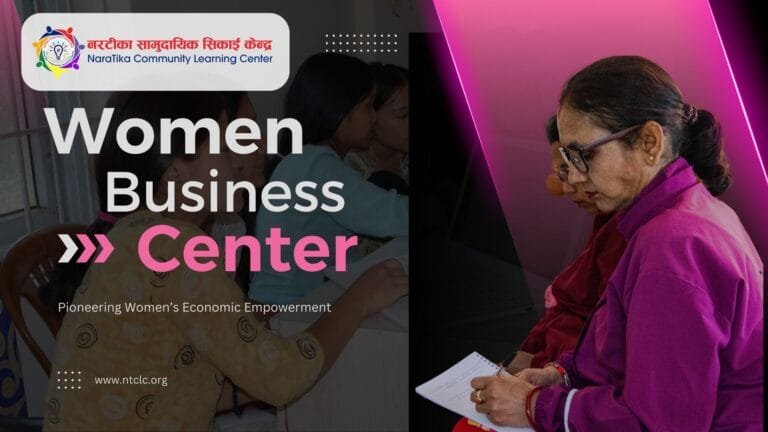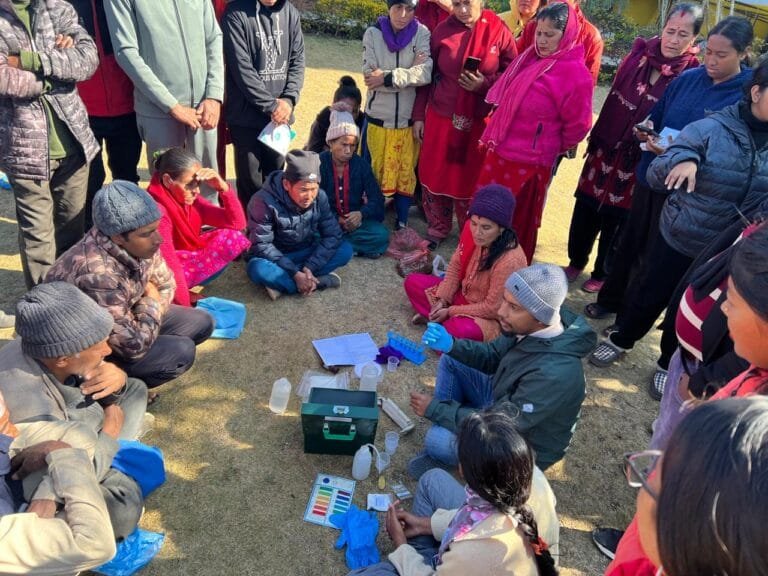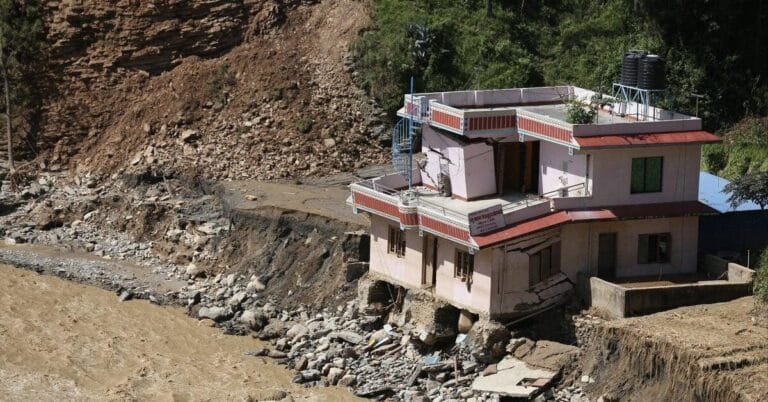Introducing the First Children’s Center in Okhaldhunga, Nepal: A Haven of Fun, Learning, and Growth
Picture a space in the remote hills of Nepal where children under ten can discover their potential through creative play, guided storytelling, and hands-on activities. A place that fosters exploration, empathy, and skill development—yet does so in a safe, nurturing, and inspiring environment. That’s precisely what our new children’s center in Okhaldhunga hopes to achieve. Established under the guidance of Volunteers Initiative Nepal (ViN), this groundbreaking facility at Nishankhe stands as the region’s first child development center and children’s activity center. With the capacity to host up to 20 kids at a time, we aim to bring a novel educational experience that merges fun and purposeful learning.
In the following sections, we’ll introduce our center’s vision, unique features, and long-term goals for Okhaldhunga’s youngest generation. We’ll also offer insightful stats, highlight real-life successes, address frequently asked questions, and explain how you can get involved in shaping the future of these children.
Highlights Table: Children’s Center at a Glance
| Key Feature | Details |
| Name & Location | First-of-its-kind children’s center at Nishankhe, Okhaldhunga in Nepal |
| Purpose | Provide a child development center and children’s activity center experience with guided, fun, and educational activities |
| Capacity | Accommodates up to 20 children (primarily under 10 years old) |
| Core Services | Fun learning resources, storytelling sessions, drawing and crafts, group games, interactive play, early literacy, and social development |
| Staff & Expertise | Dedicated facilitator experienced in children’s learning center activities; supported by volunteers and local school collaborators |
| Target Audience | Children from local schools, families, and communities; focus on those under 10 years old |
| Uniqueness | First children’s community center offering structured, guided programs in a remote region with no existing child-friendly learning facilities |
| Educational Approach | Play-based pedagogy encouraging creativity, curiosity, empathy, social skills, and foundational academic knowledge |
| Resource Variety | Includes reading corners, storytelling materials, arts & crafts supplies, educational toys, group project stations, and quiet rest areas |
| Future Plans | Expand to incorporate a children’s resource center, advanced learning modules, outdoor play space, and potential satellite centers in other rural parts of Okhaldhunga |
Why a Children’s Center in Okhaldhunga?
Okhaldhunga is a scenic district in eastern Nepal, blessed with beautiful hills, vibrant cultures, and close-knit communities. However, it remains underserved regarding developmental infrastructure, especially for younger children. Opportunities for early learning, creative play, and modern educational resources can be scarce in these remote areas.
Bridging Educational Gaps Early
In the formative years, children thrive when they have access to environments that promote both fun and cognitive development. Studies by UNICEF suggest that the early childhood phase (birth to age 8) greatly influences lifelong learning capacities, social skills, and emotional resilience by building a child development center—complete with a variety of books, toys, and skill-enhancing activities—Okhaldhunga’s children can catch up with, or even surpass, the developmental trajectories of peers in urban areas.
Fostering Community and Collaboration
Beyond benefiting the individual child, a children’s activity center in a rural community also engages teachers, parents, and volunteers. Schools can schedule visits, families can find supportive child care, and local volunteers gain valuable training in early childhood facilitation. This synergy makes the center a facility and an integral piece of the community’s social fabric.
Encouraging Socio-Emotional Learning
Emotional well-being is often overlooked in traditional classroom settings. Our children’s learning center model incorporates cooperative play, conflict resolution, empathy-building exercises, and mindfulness activities. The result? Healthier, happier children who gradually learn to manage emotions, collaborate, and express themselves confidently.
Key Features: From Play Corners to Learning Stations
Dedicated Child-Friendly Space
Our children’s play center environment is bright, inviting, and scaled to suit small hands and minds. Child-sized tables, comfortable cushions, and floor mats create a homely yet stimulating setting. We decorate walls with colorful murals to ignite imagination and carefully organize books and toys on low shelves, enabling kids to choose their octivities.
Experienced Learning Facilitator
A professional facilitator leads the daily or weekly programs. This individual is trained not only in child psychology and pedagogy but also in cultural sensitivity—understanding the local traditions and norms of Okhaldhunga. This ensures each child receives personal attention and the content is relevant and respectful of the community’s heritage.
Play-Based Curriculum
Young children learn best through structured play. Activities such as:
- Storytelling Circles: Encouraging language development, listening, and creativity.
- Arts & Crafts: Building fine motor skills and self-expression.
- Group Games & Movement: Enhancing coordination, cooperation, and healthy physical development.
- Sensory Corners: Introducing new textures, sounds, and visual stimuli for cognitive growth.
By deliberately blending fun and education, we strive to keep the experience engaging and beneficial.
Multi-Genre Learning Materials
We have curated an extensive library with bilingual storybooks, picture dictionaries, interactive reading resources, simple science experiments, and cultural tales from Nepal and beyond. Children can explore these materials independently or with guidance from our staff, which helps them develop an early love for reading and discovery.
The Power of Guided Learning for Under-10 Children
Kids under ten have a tremendous capacity for curiosity, imagination, and adaptability. This is a prime window to shape attitudes toward learning. Well-established research indicates that a child who engages in guided exploration and positive social interactions at this stage exhibits superior language skills, better concentration, and stronger social relationships later in life.
Why Child Development Matters at Early Ages
- Brain Malleability: Children’s brains are highly malleable, meaning new neural connections form rapidly. Stimuli from environment, play, and social interaction significantly shape their cognitive pathways.
- Building Self-Esteem: Early achievements—such as identifying colors, reciting letters, or completing puzzles—reinforce children’s confidence in their capabilities.
- Language & Communication Skills: Kids immersed in rich verbal environments gain vocabulary faster and develop better articulation, which is crucial for academic performance.
- Holistic Growth: Emotional intelligence, empathy, and cooperation often bloom when kids learn collectively in a supportive space.
The Role of the Facilitator
A specialized facilitator ensures each session hits both educational goals and emotional well-being. Rather than top-down instruction, the facilitator:
- Observe each child’s interests and foster them.
- Balances structured activities with free play.
- Provides gentle discipline and conflict-resolution techniques.
- Encourages children to lead specific segments, building leadership and independence.
How Our Children’s Activity Center Functions
We follow a flexible yet intentional schedule that can adapt to school visits or individual drop-ins. The center can accommodate up to 20 kids simultaneously, ensuring enough space and resources for each participant. Below is a typical weekly overview:
Monday–Tuesday: Exploratory Play & Reading Circle
- Morning: Free play with building blocks, pretend play areas, and coloring stations.
- Late Morning: Collective reading circle with a chosen bilingual storybook. The facilitator poses questions that spark imagination and cross-cultural discussions.
- Afternoon: Cooperative games focusing on social skills—like learning to share or taking turns.
Wednesday–Thursday: Art, Music, and Movement
- Morning: Introduction to drawing basics, painting, or collage work. Children work in small groups, encouraging peer support.
- Late Morning: Musical session with simple instruments or singing traditional Okhaldhunga folk songs, promoting cultural pride.
- Afternoon: Mild physical activities—simple yoga poses, dancing, or team-based movement games.
Friday–Saturday: STEM & Practical Skills
- Morning: Interactive science demonstrations (like a balloon experiment or simple observations of nature).
- Late Morning: Basic math games using tangible objects—fruits, leaves, stones—to teach counting and classification.
- Afternoon: Wrap up with reflection circles. The children discuss what they enjoyed, the challenges they faced, and how they felt working in teams.
Why “Children’s Center” Over “Child Care Center” in Okhaldhunga?
While both a child care center and a children’s center might overlap in function, our center focuses more on structured learning through play rather than just supervision. Many parents in remote Nepal must handle labor-intensive work, leaving limited time for creative engagement with their kids. A typical child care center might keep kids safe. Still, we aim higher—providing growth, joy, and skill-building in line with best practices from recognized children’s enrichment centers and children’s education center models worldwide.
Collaboration with Local Schools
Schools in Okhaldhunga often face resource shortages—limited textbooks, understocked libraries, and minimal extracurricular programs. By forming partnerships:
- Scheduled Visits: Schools send groups of under-10 pupils to the center weekly or monthly.
- Shared Resources: The center can lend educational kits to local classrooms.
- Teacher Development: Our facilitator conducts workshops for primary school teachers on creative child-friendly methods, broadening the region’s overall teaching capabilities.
This synergy ensures that the children’s community center remains integral to the formal education ecosystem rather than functioning as an isolated project.
Impacting Families and Communities
Reduced Academic Pressure
Traditional schooling in rural regions can be rigid, emphasizing rote memorization. Many young children feel overwhelmed or disengaged. A playful environment rejuvenates their interest in learning, instilling a more positive association with academics.
Family Engagement
Parents witness their children’s progress and become more open to adopting new parenting or teaching techniques at home. Some families even coordinate with our center staff to develop “mini-activities” children can do during weekends, reinforcing consistent learning routines.
Socio-Economic Benefits
Empowered children often lead to empowered communities. As kids grow older and have better foundational skills, they’re more likely to succeed in higher education or vocational paths, eventually contributing to local economic growth. Over time, the entire district may see improved literacy rates and vocational readiness.
Data and Statistics: Proving the Value of a Child Development Center
- According to UNICEF, 85% of a child’s core brain structure is formed by age 5, highlighting the unparalleled influence of early interventions.
- A World Bank study revealed that children exposed to early enrichment programs are 23% more likely to finish primary school on time and continue higher education.
- Nepal’s Department of Education indicates that rural schools perform less academically than urban areas, often due to a lack of pre-primary or complementary learning resources. Our center helps fill that gap.
Seven Frequently Asked Questions (FAQs)
Is the children’s center only for kids under 10, or can older siblings join?
Our program is primarily for under-10s, but older siblings may visit on a case-by-case basis, especially if they act as supportive aides or mentors. Our activities are mostly geared toward younger children’s cognitive levels.
Do we have to pay to enroll our child in this children’s activity center?
We strive to keep our facility accessible to all families. Typically, the center is free or charges a nominal fee to help cover maintenance. We can work with parents or guardians on flexible solutions if finances are a concern.
Are there any “formal classes,” or is it strictly play-based?
We blend purposeful play with structured lessons. Children read stories, engage in crafts, and participate in group discussions, but we intentionally keep the atmosphere playful to maintain engagement and a love for learning.
How do we know if the activities at the child development center align with our school’s curriculum?
Our facilitator regularly consults local teachers to ensure synergy. While not strictly bound by any formal syllabus, we reinforce foundational skills—like literacy, numeracy, creativity, and social development—that complement school learning.
Is this a childcare center where we can leave our kids all day?
This facility is more of a children’s learning center than a typical daycare. We focus on educational enrichment. Though some guardians use our center as a partial childcare option, we encourage active involvement and routine check-ins.
Are the staff trained in first aid or special needs education?
Our staff members have basic first-aid training and experience working with diverse learners. We aim to accommodate children with specific needs with individualized attention, though we’re still developing specialized resources and training.
How can I volunteer or donate to support the children’s center?
Volunteer or donate through Volunteers Initiative Nepal (ViN). We appreciate everything from monetary donations to supplies (books, toys, arts & crafts materials) and professional expertise in early childhood development.
Testimonials and Success Stories
“When my daughter first joined the children’s center, she was shy and rarely talked. After just a few weeks, she couldn’t wait to share the stories she’d heard and show us her new drawings.”
— Sita, Parent from a nearby village
“We brought our Class 1 students here for a half-day visit. They gained so much from the group activities—particularly the craft session at local festivals. We’ll make this a monthly outing.”
— Bikas, Local Primary School Teacher
“What struck me most was how calm but lively the place felt. Children seemed free to choose activities that spark their curiosity. This is truly a gem for Okhaldhunga!”
— Rina, Visiting Volunteer from Kathmandu
Future Plans for the Children’s Learning Center
Expansion of Physical Space and Resources
As interest grows, we aim to simultaneously expand the facility to host more children. Eventually, a separate building or an outdoor play zone could further enrich the experience.
More Child-Oriented Workshops
We plan to integrate specialized workshops like “Little Scientists,” “Mini Chefs,” or “Young Explorers.” These short themed modules let kids explore topics like science, cooking basics, or nature observation.
Collaboration with Children’s Support Organizations
Partnering with organizations focusing on child welfare, mental health, or special needs education can boost our capacity. We can offer targeted programs or even direct families to specialized services through such alliances.
Resource Library for Parents
Many parents want to support their children’s learning but lack the right materials at home. So, we plan to create a children’s resource center section that parents can explore—borrowing educational games, short reading packets, or guideline booklets on child development topics.
The Children’s Center vs. a Traditional Youth Center
Sometimes, the terms children’s center and youth center get interchanged. However, a youth center usually caters to teenagers or young adults, focusing on vocational training, leadership, or sports programs. Our facility zeroes in on the early childhood phase—ages 10 and below. While older children can still benefit from certain aspects, most of our resources, activities, and staff expertise are geared toward the unique needs of younger kids. That said, we see opportunities in the future to link older siblings or youth volunteers in leadership or peer mentoring roles, bridging the gap between various age brackets in the community.
Collaborative Learning: Parents, Facilitators, and Community
Parent Workshops
Occasionally, we host parenting sessions or coffee mornings. These serve as platforms for discussing child-rearing, health, and education tips. Parents often exchange experiences, glean fresh ideas, and form supportive friendships.
Facilitator Mentorship
We’re also open to offering practical training for aspiring educators or local youths curious about child psychology. Observing and assisting in day-to-day sessions can be a stepping stone for those who wish to pursue a teaching career.
Community Events and Celebrations
Festivals like Dashain, Tihar, or Holi become communal celebrations at the children’s play center. We blend cultural traditions with child-friendly activities—like painting diyas or learning folk songs—providing a joyful introduction to Nepal’s cultural wealth.
Potential Obstacles and How We Plan to Overcome Them
- Resource Limitations: Sourcing age-appropriate learning materials in rural settings can be challenging.
- Solution: Collaborate with local artisans, encourage toy or book donations, and utilize upcycled household items for crafts.
- Financial Sustainability: Staff salaries, facility upkeep, and expansions demand ongoing funding.
- Solution: Diversify revenue through small membership fees, local fundraising events, external grants, and philanthropic support.
- Cultural Adaptation: Some families might be unfamiliar with or skeptical about the concept of a children’s enrichment center.
- Solution: To demonstrate positive outcomes, involve parents in open houses, host community gatherings, and highlight success stories.
- Transportation Constraints: Parents or teachers from more distant villages might face challenges reaching Nishankhe.
- Solution: Develop a rotating schedule to accommodate multiple schools or consider eventually establishing smaller satellite centers.
Measuring Success: Indicators and Evaluation
To confirm that we remain effective, we’ve built an evaluation strategy:
- Attendance & Participation: Tracking daily attendance, session sign-ups, and returned visits from families or schools.
- Feedback Surveys: Gathering parents’ and teachers’ perspectives on children’s behavioral changes, new interests, or improved social skills.
- Child Observations: Staff keep anecdotal notes on each child’s progress in language, fine motor coordination, or problem-solving.
- Community Partnerships: Monitoring how many local schools adopt or replicate our methods.
- Volunteer Satisfaction: Volunteers or interns who join us through ViN provide insights on center operations, offering suggestions for improvement.
Analyzing these data points over time helps refine our approach, ensuring continuous improvement and alignment with evolving community needs.
Reaching Out: How You Can Support This Children’s Community Center
Volunteer: Skill-Sharing & Mentorship
A single volunteer with expertise in early childhood education, art, music, or story writing can make an enormous difference. If you’re adept at any relevant skill—buppet shows, drama, or even basic technology for kids—your contribution can open new horizons for local children.
Donate: Materials or Funds
We’re always looking for educational toys, storybooks, arts and crafts supplies, and child-friendly furniture. Monetary donations help sustain operating costs, fund expansions or sponsor learning materials for kids from underprivileged families.
Spread the Word
Talk about us on social media, at family gatherings, or on any platform where potential supporters might show interest. The more widespread our message is, the greater our chance of securing essential partnerships.
Partner with ViN
Volunteers Initiative Nepal (ViN) has a proven track record in community development. By collaborating with them, you become part of a broader ecosystem that includes volunteer recruitment, logistics support, best practice sharing, and financial accountability.
A Day in the Life at Our Children’s Enrichment Center
- 9:00 AM: Doors open. The smiling faces of the first arrivals greet the facilitator. They join a short morning circle to sing a welcome song.
- 9:30 AM: Arts and crafts session—some children paint Nepali flag patterns, others cut out shapes for a communal collage. The facilitator circulates, praising achievements and guiding techniques.
- 10:30 AM: Short story time: “The Clever Rabbit,” read aloud in both Nepali and English. A quick Q&A helps them recall plot details and lessons on friendship.
- 11:00 AM: Outdoor break—if feasible, a local courtyard or garden is used for mild physical play. Jumping, skipping, group ball games or gentle tag keep them active and social.
- Noon: Lunch break. During this break, children either bring home-cooked meals or share fruits provided by the center, encouraging healthy eating habits.
- 1:00 PM: Quiet reading time. Kids can flip through picture books, and older kids might try easy-reading stories while the facilitator helps with tricky words or deeper explanations.
- 2:00 PM: Group puzzle or building-block challenge fosters teamwork, problem-solving, and communication.
- 3:00 PM: Reflection circle. The day ends as the facilitator celebrates the children’s accomplishments and previews tomorrow’s activity (perhaps a tiny puppet show or nature walk).
This routine highlights how we integrate creativity, literacy, social skills, and active learning in each session.
Comparisons with a Traditional Children’s Resource Center
While a children’s resource center in more urbanized areas might prioritize purely academic materials or a formal structure, we blend local culture, free play, and skill-building tasks to keep sessions relevant to rural lifestyles. This adaptive approach acknowledges constraints (like possibly limited technology or parental involvement) but uses them as catalysts for creative solutions. That’s why we brand ourselves as a children’s community center—a place rooted in collective growth, not just individual child care.
Embracing Cultural Identity
Celebrating local customs forms a cornerstone of our approach. Kids might listen to folktales from Okhaldhunga’s indigenous groups or replicate local crafts. Through such experiences, they sharpen their literacy or motor skills and develop pride in their cultural heritage. We occasionally invite elders to share personal stories or craft-making techniques, bridging generational knowledge gaps and fostering a sense of continuity.
The Broader Perspective: A Step Toward National Progress
Nepal has gradually shifted from a rote, exam-driven education model to a more holistic, child-friendly approach. Innovations like children’s learning center projects are crucial. By shaping positive attitudes early, kids in Okhaldhunga stand a better chance of thriving in future academic stages—and, ultimately, as active, informed citizens. The collective effect: a more literate, socially aware, and vibrant community, with children at the forefront of change.
Why We’re Passionate: Changing Lives One Child at a Time
Consider the transformation that occurs when a shy child finally musters the courage to speak up in a story circle or when a bright but restless student finds joy in a puzzle that channels their energy productively. These daily moments underscore the fundamental purpose of a child development center or children’s education center. We dream of a society where no child’s potential goes untapped simply because they live in a remote area.
We see each child as an individual with unique learning preferences, interests, and challenges. By acknowledging that diversity, we provide multiple ways for children to engage and express themselves—verbally, artistically, physically, or socially. Our staff and volunteers wholeheartedly believe that today’s excited, curious child becomes an empowered, dynamic adult tomorrow.
Final Thoughts—A Call to Action for a Bright Future
This children’s center in Okhaldhunga stands as a beacon of hope, dedicated to unveiling the boundless potential in each child who walks through our doors. Yet sustaining such an undertaking in a remote locale is no small feat. From daily management and resource acquisition to staff training and program expansion, we rely on a broad network of supporters to keep the dream alive.
That’s where you come in. You, as a caring individual, can shape a child’s destiny. Whether you volunteer your time, share a skill, donate necessary supplies, or sponsor a single child’s membership—any act of giving fosters the center’s longevity and impact. Volunteers Initiative Nepal (ViN) invites you to join us in transforming the learning landscape of Okhaldhunga, thus forging a brighter future for the region’s youngest minds.
- Volunteer: Contribute your expertise—be it in arts, music, storytelling, or tutoring.
- Intern: Gain real-world experience in child psychology, educational program design, or community outreach.
- Donate: Help us procure educational tools, books, and stationery or build new play facilities.
- Spread the Word: Share this article with friends, families, or social networks so more potential supporters can discover our center’s transformative work.
Together, we can ensure that Okhaldhunga’s children have every opportunity for a joyful, meaningful, and enriching childhood—building a generation brimming with curiosity, empathy, and achievement.
Gallery

